The reef squid, also known as the Caribbean reef squid (Sepioteuthis sepioidea) is a small member of the Loliginidae (pencil squid) family. At first, it might seem like a somewhat random addition to Safari’s Incredible Creatures line, just one out of over 300 squid species and with nothing particularly remarkable about it. It’s certainly not as other worldly as the long-armed squid, as mysterious as the giant squid, or as intimidating as the Humboldt squid. But despite its unassuming size and appearance the reef squid is quite remarkable in its own right. Is there really a species of cephalopod that isn’t?

The Caribbean reef squid lives in reefs around the Caribbean Sea, making it aptly named. It can also be found off the coast of Florida as well, making it an appropriate species for the Florida based Safari Ltd. It is there that the species lives in small schools, feeding on small fishes, mollusks, and crustaceans. At 8.25” (20.9 cm) the Safari reef squid is life size.
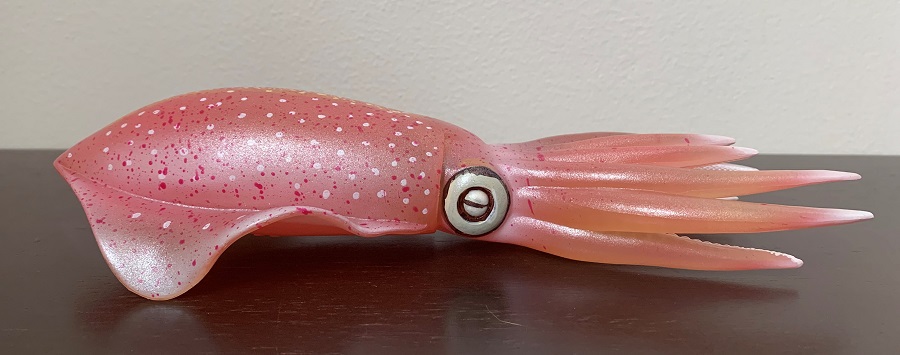
The reef squid has a somewhat broad body, which in conjunction with fins that expand almost across the entire length of their bodies, makes them look a lot like cuttlefish. These fins allow this otherwise benign squid to do something quite remarkable. The reef squid is capable of launching itself over 6’ (1.8 meters) out of the water and flying over 30’ (9.1 meters) before reentry, essentially making them flying squid. These squid even use their arms to aid in their flight, flaring and spreading them out in a circle while also flapping their fins and jetting water for an extra boost.
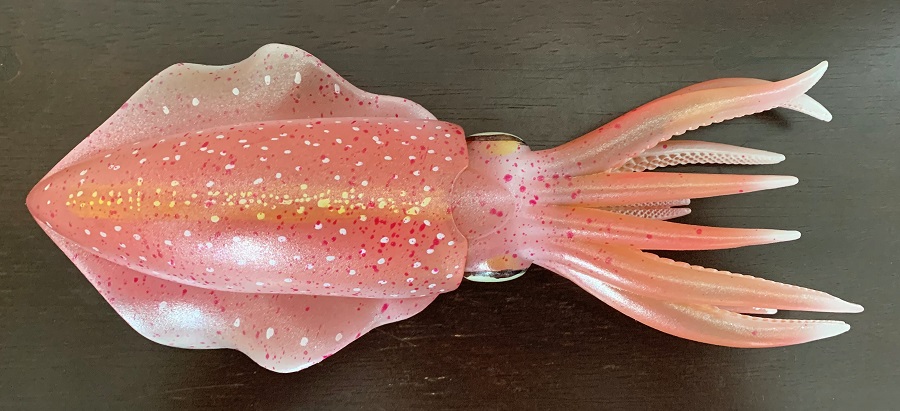
The Safari reef squid is beautifully sculpted, and with a hollow somewhat translucent body quite lifelike too. It possesses 8 flexible arms, and two tentacles, intricately detailed with tiny suckers. A small beak is sculpted within the circle of arms. The eyes are appropriately large with somewhat accurate horizontal pupils. The large fins are sculpted in an undulating position and a siphon is present as well.
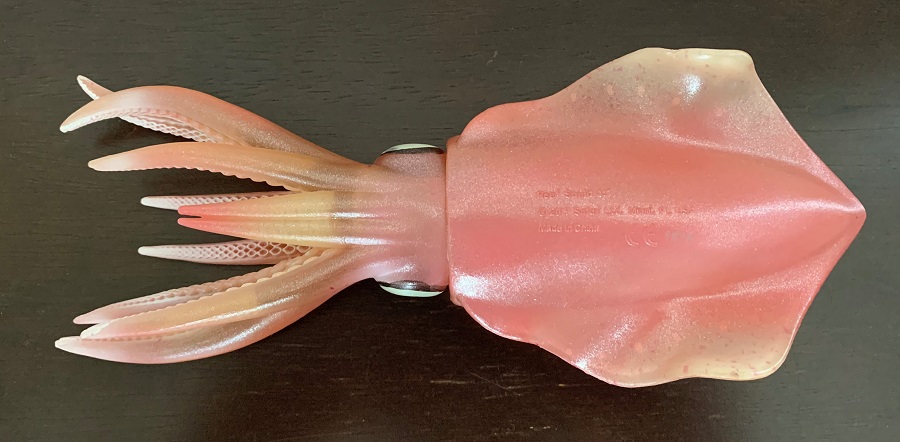
The Safari reef squid is painted in various shades of pink that nicely blend together. Darker pink and white specking is painted across the surface of the body, and a line of yellow speckling is painted in a stripe down the center of the mantle. The arms are tipped in white, and the suckers are painted white as well. The eyes are white with brown edges and brown pupils. Overall, the coloration and patterning are attractive and striking. The paint is nicely applied too, although sloppy around the eyes with obvious brush strokes and bleeding of the paint.
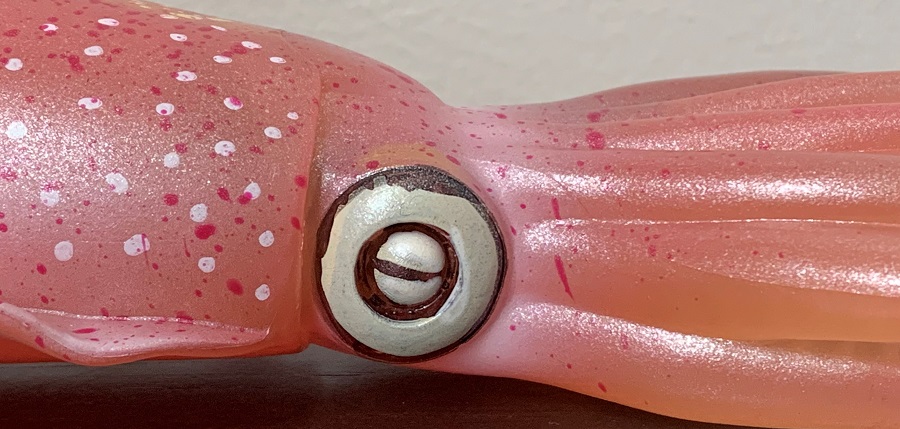
The neutral color of actual reef squids is mottled green and brown, so this squid is a bit fired up. Like other cephalopods the reef squid relies on a complex system of changing and flashing colors and patterns, in order to communicate with each other or for camouflage. They are even capable of controlling which colors and patterns are displayed independently on each side of their bodies. I don’t know what this pink coloration means to a reef squid but in watching videos of reef squid it seems like these colors and patterns were used mostly in reproductive displays.
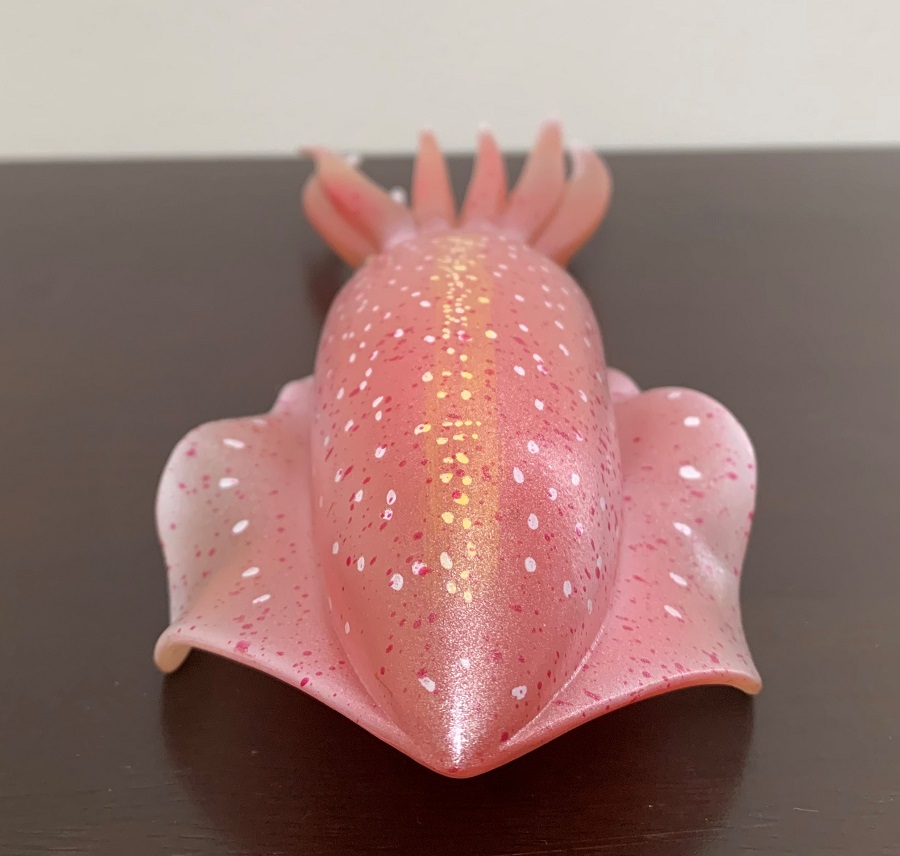
Now here’s where the ball drops. This squid is upside down. The biggest tell in this is that the siphon appears to be sculpted onto the dorsal surface of the toy, but it’s actually not, and the toy is in fact anatomically correct. The issue is that all the intricate coloration that should be displayed dorsally is actually on the toy’s underside, while the company and production information are stamped onto what should be the top. Oops! While not necessarily a deal breaker it is a pretty significant mistake in the production of an otherwise wonderful toy. Most people won’t notice it, but once you see it there’s no going back.
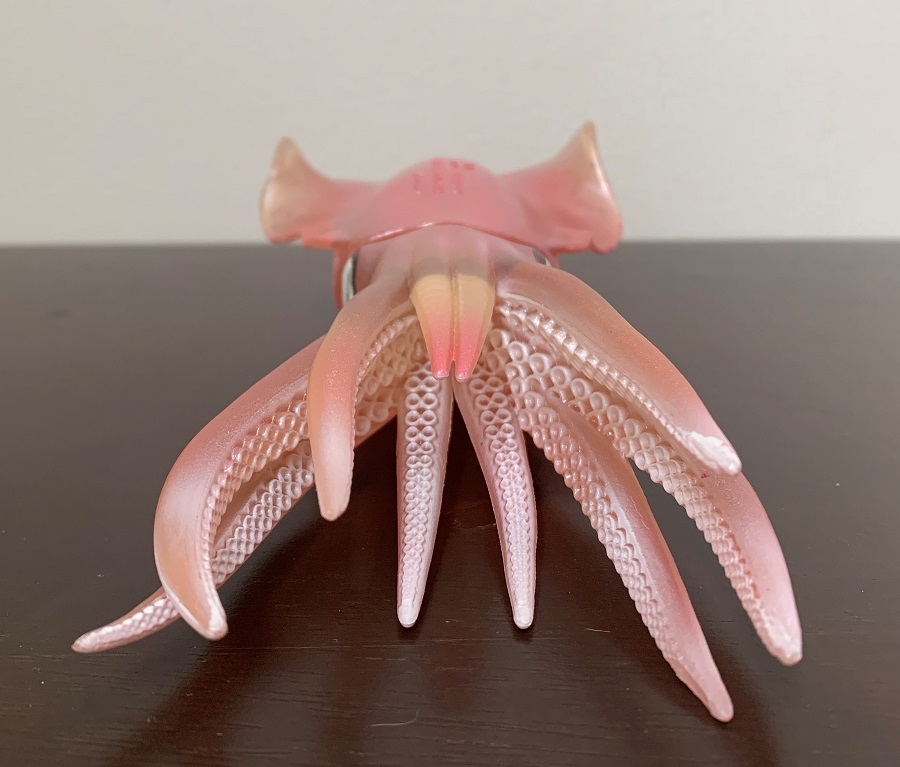
I think after reading this review, you’ll agree that the Caribbean reef squid is a worthy addition to Safari’s Incredible Creatures line, being quite a fascinating creature. The toy’s bold coloration, life sized scale, and well executed sculpt all make it a worthy addition to any cephalopod collection. That is, if you can get past the squids topsy turvy faux pas. The Safari reef squid was released in 2017 and is still in production. It sells for about $10.00 U.S. dollars.
Disclaimer: links to Ebay and Amazon on the AnimalToyBlog are affiliate links, so we make a small commission if you use them. Thanks for supporting us!




When promo pics were first revealed, brontodocus suggested it was upside down. Glad you mentioned that; I concur.